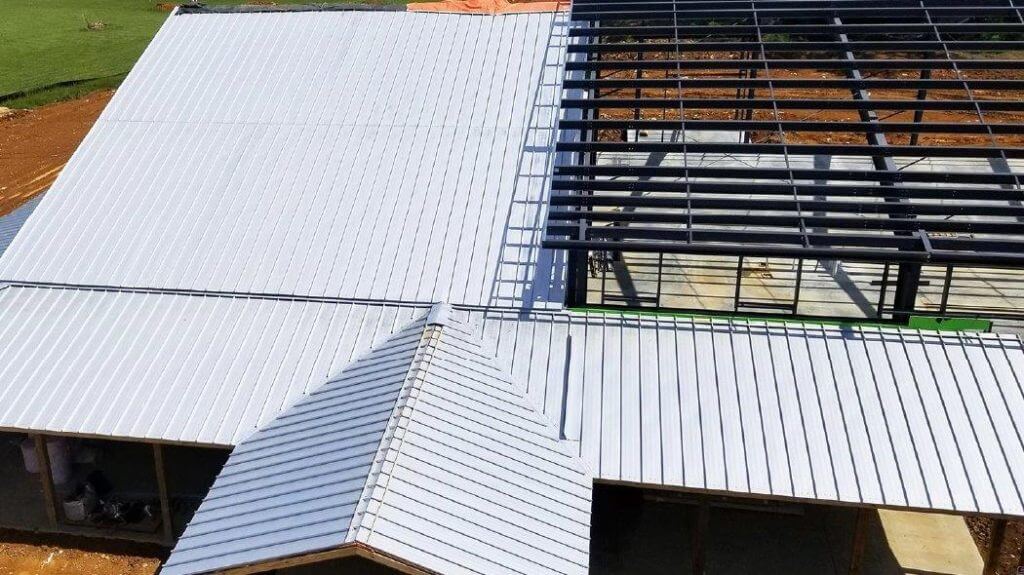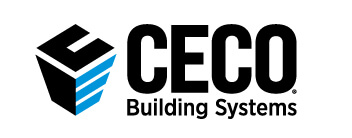Understanding Fire Ratings, Codes and More
Posted on February 17, 2022 by Ceco Building SystemsCracking the Code: Understanding Fire Ratings, Codes and More
We’ve all heard about fire ratings, but all the codes, language and rules around them can be confusing. At Ceco, we believe it’s crucially important to understand why we have them, what they really mean, how they’re created and how to use them. It will make all of us – and our buildings – safer. When installed correctly, fire-rated materials and assemblies can slow or even stop the spread of a fire. This provides precious time to get people out of the building before it is engulfed in flames or the structure collapses.
Visualizing Principles
If you’ve built or watched a campfire, you have some understanding of the burning characteristics of different materials. You’ve seen light, dry material catch fire and burn quickly, spreading the flames around. You’ve probably also noticed that wet, green or thicker chunks of wood take much longer to burn. And, if you’ve ever tossed an aluminum can in, you’ve noticed that it simply doesn’t burn.
Fire ratings and tests formalize all these principles and more so that we, as builders, can ensure our buildings can resist, stop or contain fires when they start.
Understanding Terms
While there are fireproof materials, no structure – not even complete metal construction – is fireproof. Fire resistance is the characteristic of certain materials to withstand heat and fire without catching fire themselves. Fire ratings, on the other hand, are the results of tests in which materials and assemblies (some of which are fire-resistant) were tested against fire. These tests include different construction elements, like beams, floors, columns, walls and roofs. These ratings give us an idea of how long and how well these materials and systems stand up to fire while retaining their structural integrity are usually given a rating of between one and four hours.
Alphabet Soup
The language and abbreviations in the world of fire ratings can be confusing because of all the different organizations that create ratings, tests and standards:
Testing & Code Creation Agencies
- Underwriters Laboratories (UL)
- American Society for Testing and Materials (ASTM)
- International Building Code (IBC)
UL and ASTM rigorously test materials and assemblies in all kinds of environments to determine their fire resistance rating. The results inform the creation of codes by the IBC as well as local building codes.
Regulations and Recommendation Organizations
- International Code Council (ICC)
- Metal Building Manufacturer’s Association (MBMA)
To assist builders, designers, architects and engineers in understanding and following the codes created by ASTM and UL, the ICC and MBMA provide regulations and recommendations.
Multiple Lines of Defense
Adequately avoiding, controlling or containing fires relies on several different systems. First, fire detection systems like smoke and fire alarms help building occupants and first responders react quickly to a fire. Second, compartmentalization systems contain the fire, stopping it from quickly spreading throughout the building. These could include fire doors, fire-resistant walls and assemblies. Third, suppression systems like sprinklers, hose systems, and non-water-based fire suppression/extinguishing systems attempt to put the fire out or slow its spread until firefighting crews arrive. The term “fire-protected” takes all the above into account.
Requirements for systems like these, as well as fire-rated building materials and assemblies, depend on several factors. What type of occupancy is the building intended for? Fire resistance demands on a warehouse will be far less stringent than those for an office building or apartment complex, where occupancy is higher. Height is another important factor, as well as the distance between the building and adjacent structures or property lines. Building material is another critical consideration.
Steel Advantage
Just like in the campfire we talked about earlier, fires that erupt in wooden structures – where the structure itself is flammable – face little barrier to spreading quickly. Metal buildings, on the other hand, have a simple advantage. Cold-formed steel, unlike other building materials, does not burn. It does not ignite, feed the flames, or cause them to spread. Therefore, steel framing is recognized by the IBC as a noncombustible material. In a structural fire, it easily outlasts wood framing, light-gauge steel framing, and other building systems.
Building with steel and metal components can vastly simplify your adherence to fire codes. In building categories such as retail, office and education, the code allows for a much larger unprotected or non-fire rated area than in wood buildings – often 50% or more. Sprinkler systems are optional for a typical single-story metal building, and most metal buildings don’t require fire protection to be installed on the structural framing. Another benefit is that most insurance carriers offer substantial discounts for steel buildings.
Fire Escape
However, this doesn’t mean metal buildings are fireproof. High temperatures can weaken steel until it fails – but this requires temperatures in excess of 1,500°F. To protect occupants against this eventual collapse, metal buildings still may need fire rating on specific walls that separate occupancies, are close to adjacent properties or are needed for lifesaving exit corridors.
Slow Burn
Apart from constructing with noncombustible materials, there are other options for increasing the fire protection in your structures. Fire-resistant protection comes in many forms, such as coatings, gypsum board, spray-applied fire-resistant materials (SFRMs) and metal track with intumescent tape.
But with products such as these, as well as with any fire rating system, following the application or installation requirements is absolutely critical. They were tested in very specific conditions. If you change any of these – say by leaving a bit of a gap in an assembly, not thoroughly cleaning a surface before adhering a fire-resistant product, using materials that weren’t part of the tested system – you are creating a failure point that could cost lives. Please be sure to understand and follow these requirements to the letter – and double-check your work.
Where There’s Smoke…
The integration of fire-rated assemblies and products into any construction project is as complex and varied as the endlessly different buildings in existence. ASTM and UL simply cannot test for every eventuality, combination of parts or newly imagined assembly. The best method to cope with this fact is to plan early and plan well. Engineers can help ensure continuity of assemblies and joints, that increased structural loads from fire protection and sprinkler systems can be carried, and that details such as cable trays, ducts, pipes and other penetrations are prepared for with fire-resistant solutions like intumescent firestop material – which expands under the heat of a fire to fill voids and contain the flames.
We hope this guide helps demystify and untangle some of the confusion around fire ratings. At Ceco, we believe it’s worth understanding fire codes. For more details, consult the Fire Resistance Design Guide for Metal Building Systems, published by MBMA, which is considered the complete source for fire protection information. Or, for personal help, get in touch with a Ceco representative.


